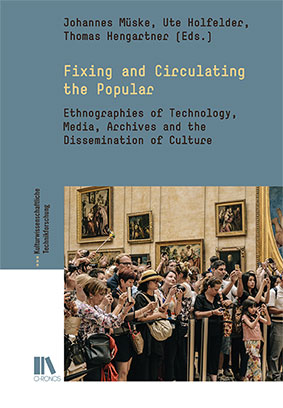Ethnographies of Technology, Media, Archives and the Dissemination of Culture
Text in englischer Sprache
- Kurztext
- Autor/in
- Einblick
- Buchreihe
- Downloads
Fixing and Circulating the Popular is a contribution to the fields of cultural anthropology/folklore studies, cultural studies, and media studies, exploring processes of appropriation and re-coding of popular culture in everyday life. The articles in this volume are inspired by the research approach of cultural analysis of technology (Kulturwissenschaftliche Technikforschung) and present new ethnographic case studies on techniques of collecting and distributing popular culture in the past and present, such as folk heritage collections, radio, and cultural policies building upon such media. They investigate love communication and mobile phone videos produced and distributed with smartphones and the use of geodata platforms.
- Fixing and Circulating the PopularS. 7–16
- Technology, Culture and the EverydayS. 17–34
Technology Studies as the Study of Everyday Culture
- Circulating “Swissness”S. 35–50
The Construction of National Identity through Popular Music and the Impact of Technology
- Investigations of Vernacular Architecture in Scandinavia in the 1920sS. 51–66
- Transforming Superstition into Living TraditionsS. 67–85
Archiving and Circulating “Folk Medicine” in Switzerland
- Walking – Clicking – Locating – ZoomingS. 87–106
Circulations of Spatial Practices through Navigational Geodata Platforms like Google Maps
- “The Unique Moment”S. 107–122
Camera Phone Videos Taken at Concerts
- Constructing Ethnicity through ICTS. 123–142
Visual Culture, Creativity and the Circulation of National Symbols in Postmigrant Youth Culture
- Love Communication and Socio-Cultural ChangeS. 143–160
From Love Letter to Love Message via Camera Phone Video
